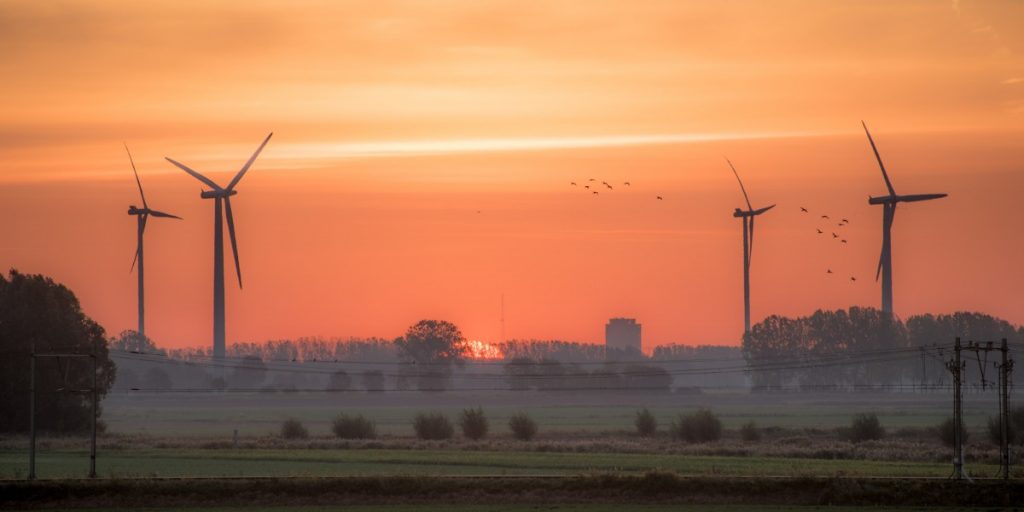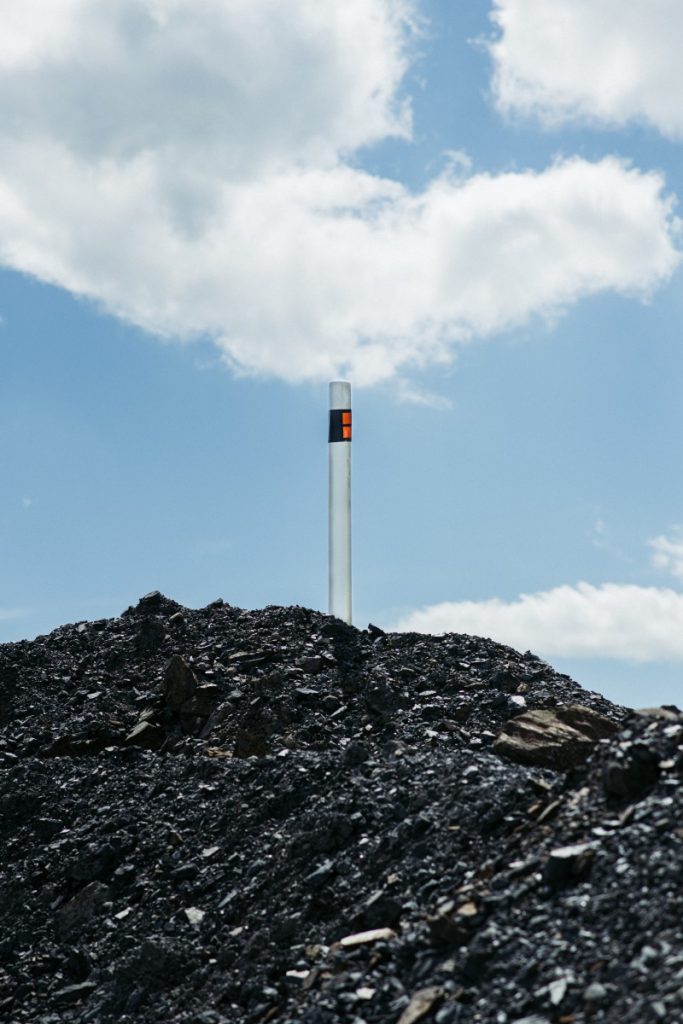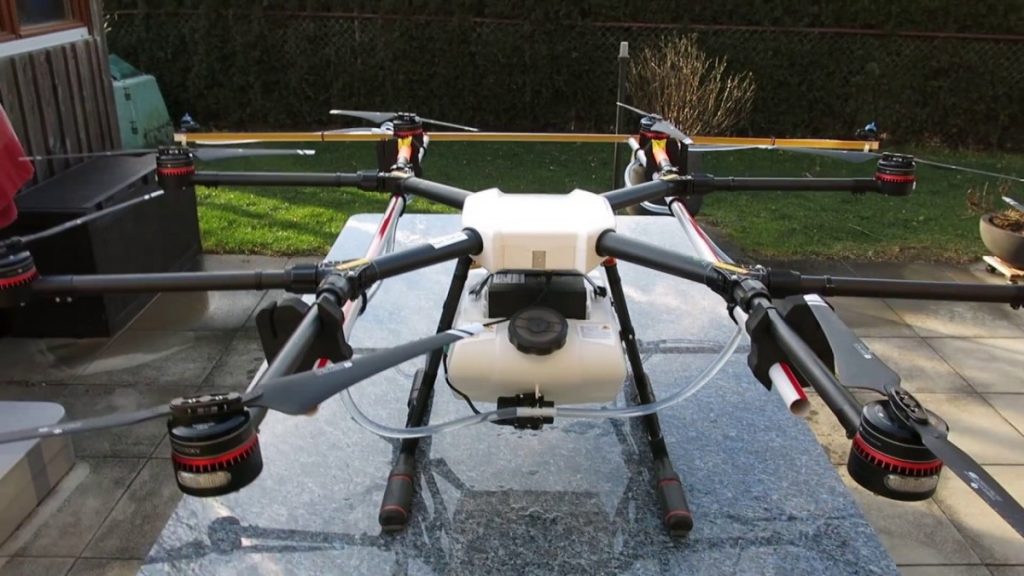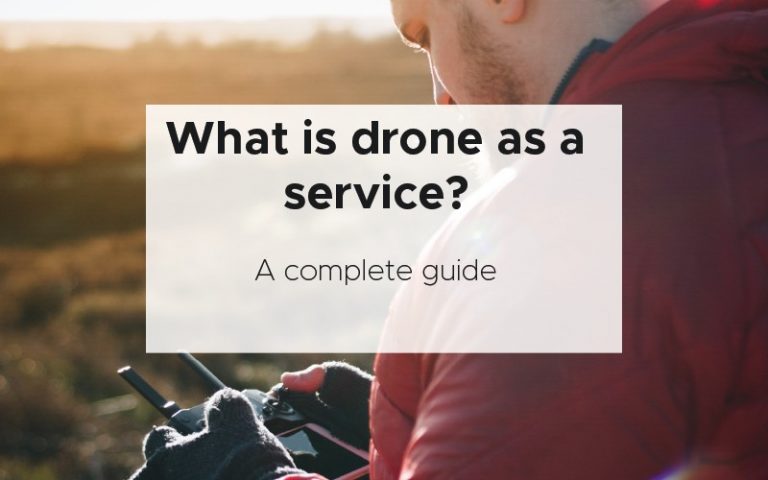Over the past few years, we’ve grown used to drones being part of everyday life. Whether or not you know it drones are being used in warfare every single day to protect human lives. But the use of drones in civilian life is only just becoming more researched and accepted. You may have seen loads of examples of drones policing the skies during protests, drones delivering packages, drones inspecting wind turbines, and other important infrastructure. But who owns all of these drones, who maintains them, and who is going to charge all of those batteries? This is where drone is a service comes in. But what is drone as a service?
Drones as a service (DaaS) is also known as unmanned aerial vehicles services and it is an emerging market for services built around flying drones that are remote-controlled or fly anonymously using software-controlled flight plans and proprietary navigation systems.
In this article we will look at some of the examples, and companies, of drone as a service. Although commercial drones are available and there are a few companies offering drone services the technology will continue to develop and grow to meet market demands. To provide better business made to their customers drone service providers will need to focus on big data accuracy of data analysis and a way of managing sensitive data with data governance. It’s not as easy as it seems because companies must also navigate businesses risk aversion is to new technology and lobby government to get around certain prohibitive laws and red tape which includes privacy and security concerns of the general public.
Because this is a rapidly developing market let’s take a look at some of the current examples of drone services that could be used by businesses and companies looking for innovative solutions to problems.
Examples of drone services
One of the nicest ways to understand drones as a service is to consider the businesses that would best benefit from sending drones up into the sky. Here we will go over some of the most innovative drone uses and the companies that are running the drone as a service business model.
Photography
One of the most obvious ways to make money with a drone is to sell drone photography as a service. This means that a professional photographer can use a drone camera to capture some unique angles of events and people. These are particularly useful for large events and events with loads of people that you want to capture the people and the location. For example, weddings are fantastic booming industry where people can capture their special day using drone photography and videography.
For this service it often involves paying for the presence of a photographer as well as the manipulation and exporting of photos and video files. Because camera drones are starting to become cheaper these services are getting less expensive as more people are able to access the technology and provide a service on the weekend as a side hustle or a small business owner. To get into this business you only need to have a drone which is a small investment for a potentially lucrative business.
Inspecting wind turbines

Inspecting wind turbines typically requires an engineer to scale the huge fixture from the inside and look for any potential damage or issues for future operation. There are load of companies that offer drone inspection of wind turbines and others are also able to use thermal imaging to detect hot motors and friction points. The main reason is to investigate the integrity of the blades which is very hard to do in a conventional manner. The blades of a winter mowing can range from 5200 m long and accessing them is incredibly hard. In the past people have tried to look at them using binoculars and a telescopic lens but it is an accurate and is hard to document exactly what the problem is if you identify one.
A company called SkySpecs is an example of a company that optimises operations and maintenance for wind farms. They have developed custom-designed drones and predictive maintenance software and algorithms to answer this specific question.
Researchers in the United Kingdom have taken this one step further and developed autonomous drones that can inspect offshore energy sites. In the research led by the Edinburgh Centre for robotics their aim was to remove the need for humans to carry a dangerous and costly tasks such as abseiling down wind turbines and going to offshore wind farms in ships or helicopters.
Stockpiles volume analysis

Mines and the mining sector have not progressed much beyond piling up stockpiles of mind materials such as coal and iron ore. Monitoring stockpiles is a time-consuming and potentially dangerous task.
Companies like Rectrix drone services use drone technology to take between 303,000 pictures of stockpiles during an autonomous flight. The data is then processed using proprietary software and they also offer consulting via experts to give you an accurate volumetric analysis of the amount of stuff in the stockpile. This reduces risk as there is no need to send teams up to the stockpile, it saves time as the autonomous drones do all the work, and it cuts costs by minimising the loss of stock and allows for accurate analysis of stockpiles volume and therefore profit.
Drones in this area have been known to increase accuracy of these measurements by about 10 times.
Asset inspection
Quite simply, drones can go to where people cannot get to. Whether it is solar panels on a roof or the inside of a pipe there are drones that can inspect almost anything nowadays. There is no need to send humans into potentially hazardous inspection situations, such as enclosed spaces, any more. Drones are able to assess and inspect company assets in a much more efficient manner. The ultimate goal is to make sure that they don’t need a pilot either and that they are able to autonomously inspect a range of different company assets.
Surveying
Drones are able to get an amazing 360° view of any construction project or area of interest. Not only are they able to view the sites but they can also capture data about the progress and current state of any area. This requires a good high-definition camera as well as software to stitch the image together. This relies on the drone having a load of different senses (which can include a light sensor i.e. a camera). They can also include a multispectral camera and lidar sensors to measure topography. The sorts of things you can survey are:
- land surveying – drones generate high resolution and detailed 3D models of areas where Google Maps cannot.
- Land management and development – aerial images taken by drones can increase the progress rate and simplify discussions for land management planning will stop
- slope monitoring – it is possible to understand the steepness of a grand surface through the data captured with a drone. The areas can be classified and used for slope monitoring purposes such as landslide prevention.
Agriculture

agricultural drones can be used for a variety of reasons such as monitoring plant health, counting the number of plants in a given area, and assessing loft losses after a major weather event. Like the other applications in this list agricultural drones can combine a variety of multispectral imagery to provide accurate plant counts all identify health problems early. This data can be used to prevent the spread of diseases or invasive species.
Companies like my drone services that improves crop health and yields. Beyond monitoring agricultural drones can also do large areas spraying and maintenance of crops. This company offers drone as a service for farmers which results in better eco-management because you are not blanket spraying with a plane. And can result in a lower cost for consumers as the targeting ability of drone technology allows for the chemicals or fertilisers to be sprayed exactly where they are required and nowhere else.
So there are some of the most common examples of where drones are used in business to improve efficiency and reduce costs. But what exactly is the drone as a service business model? Let’s take a look at the ways in which drone technology is making money.
Drone as a service business model
This business issue is as old as business itself. Do you buy a piece of equipment, lease some hardware, or pay for a service to solve a problem? If an industry requires machinery this is the question that they ask all the time. It essentially comes down to what is the most cost-effective way of solving that problem. Often referred to as return on investment. The thing about drones is that they do require ongoing maintenance and can easily be damaged if the drone is not manned in a safe way. But also, accidents do happen which could wipe out entire investment for a company.
You only have to look at the software companies to get an idea of how things will progress. In the early 90s software companies sold hard copies and licenses of the program via a CD sent in the post. But pretty much every single one now is offered in a subscription model. Everything is downloaded to manage from a central location which means reduce cost for that company selling the software.
The business model commonly use nowadays are very simple. Typically, they fall into a few categories:
- renting a drone – some companies offer drones for rents with insurance and all of the legislation taking care of which means that the company can just focus on using a drone for exactly what they need to use it for without worrying about maintenance and upkeep of the drone.
- Pilots for rent – this is where a drone company will send a drone pilot and drone to your site and perform all of the flying for you. This means that you are gay professional drone pilot as well as be sure that the required outcome is achieved without having to invest in internal skill building.
- Consulting – there are companies that, if you approach them, will inform you about what drone you need and which software you should buy to achieve a desired outcome. These consultants have an expert knowledge of the drone industry and the most up-to-date information about models and advancements in drone technology.
- Software – drone software for monitoring and operation of drones can be a lucrative area. Software is fantastic because you only need to build it once and then you can sell many copies of the same software improving as you go. Software can be used for mission planning, flying and collecting data, processing and analysing the data, reporting, storing and sharing the information as well as operations management. An example of this sort of company is measure.com. They offer some of the most comprehensive and complete software platforms for drones.
- Piloting lessons – one way that you can make money from a drone is a service business model is to provide beginners with drone flying lessons. You can also help them navigate any legislation and licenses that they need to fly a drone in their local area.
- Photography – this is a very simple business model where you essentially exchange money for photos. This will involve a briefing with the client, going to location, capturing the photos, and working up the photos so that they look awesome. And then delivering digital and hard copies to the client.
So you can see that there are plenty of options for drone as a service business models. Now, let’s take a look at the potential issues in the near future of drone as a service. It isn’t as clear-cut as some people would have thought and the question still remains as to whether or not we are able to still satisfy market demands that aren’t solely fads.
Issues with drone as a service
It used to be the drones were very hard to fly. In 2015 there was a massive drone trend which resulted in a boom of different companies capitalising on interest in this new technology. That early on drone technology wasn’t as advanced and was significantly more expensive which means that there were more opportunities to fly for money.
Also, there were plenty of regulatory hurdles that people have to navigate in the past. In some places operators are required to take a two hour exam before they were authorised to fly drone as a commercial venture.
As time has progressed however all of these hurdles have been removed and companies are more likely to want to move their drone capabilities in house. This means that other business models such as consulting and information based drone business models can be better than outdated in person drone business models.
There are still plenty of opportunities for service based business models but companies must remain vigilant to what their market is demanding and adapt according to customer demands. Some of the most lucrative places for drone providers were in the niche spaces such as agriculture and wind turbine management. Not mainstream ones such as photography where there is already a competitive market place.
Venture capital in drone companies
In investment, venture capital, circles there is a preference for scalable business models for investment. That means that if drone companies want to capture a huge portion of the market they need to come up with a scalable and reproducible business model that can service loads of customers at once. That’s why we are seeing a trend towards software rather than hardware in many high-tech spaces – and drone technology and businesses is one of them.
I’m pretty sure that will be seeing more of this business innovation as the years go on and drone technology becomes cheaper and more affordable for everyone. We will not see a huge shift in drone technology Intel the basic technological components are improved significantly – this will result in longer flight times, larger payload drones, and long-distance drones.
Conclusion
In this article we have covered what drone as a service is and the sorts of options for monetisation of these companies. It’s certainly a very interesting time for drone technology and companies as it is a rapidly evolving market that requires innovation to stay relevant and address serious customer issues.
However the market shifts businesses will need to change their solutions so that the needs are met and they will have to execute quickly to avoid being made irrelevant in a shrinking market for drone as a service businesses. Staying niche and using their proprietary information will mean that drone is a service companies will have a competitive advantage.
The future is certainly interesting and if you’re thinking about starting a drone is a service business you need to do a lot of experiments and customer investigation as possible before launching into a potentially risky business offering. There is a potential for a fast-moving company to make a big impact but the technology will also need to advance quite rapidly before any significant changes in the way drones as a service operates are made.




